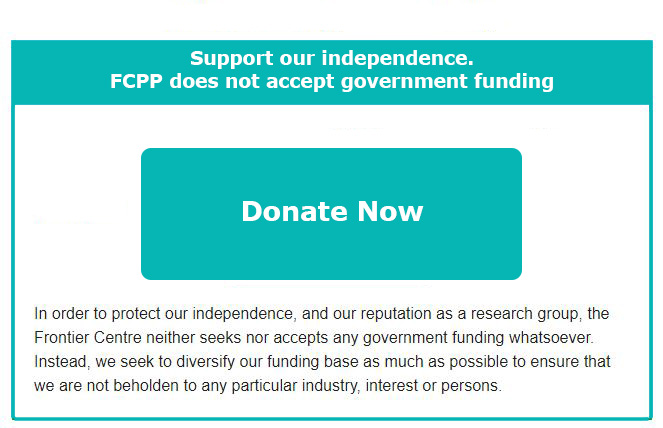Each of our great universities used to have official mottos that were meant to stand for their values. For example, McGill University’s was “Grandescunt Aucta Labore,” ‘by work, all things increase and grow’; Western University’s was “Veritas et Utilitas,” ‘truth and usefulness’; Queen’s University’s was “Sapientia et Doctrina Stabilitas,” ‘wisdom and knowledge shall be the stability of thy times’; Wilfred Laurier University’s was “Veritas Omnia Vincit,” ‘truth conquers all’; and Brandon University’s was “ἀληθεύοντες δὲ ἐν ἀγάπῃ,” ‘speaking the truth in love.’
To avoid provincialism, here are a few American examples: Yale University’s motto was “Lux et Veritas,” ‘light and truth’; Massachusetts Institute of Technology’s was “Mind and Hand”; Duke University’s is “Knowledge and Faith”; my alma mater the University of Chicago’s was “Let knowledge grow from more to more; and so let human life be enriched”; and Harvard University’s was concise “Veritas,” ‘truth.’
By 2020, almost every university in North America has replaced its traditional motto and specified objective with the common motto “diversity, equity, and inclusion,” and its more concise label, “social justice.” Truth, knowledge, and wisdom have been replaced in favor of social engineering.
What do woke universities mean by “diversity, equity, and inclusion,” and do they live up to their claimed values in practice?
“Diversity, equity, and inclusion” and “social justice” are defined by universities in a statistical, demographic sense. Universities want to know how many members of the preferred categories of “marginalized communities” and “underrepresented minorities” they have, and whether there is a disparity between these and members of other majority identities. When members of collective census categories, such as racial, sex, sexuality, and ethnicity, etc., categories are represented in universities at the same percentage that they are in the general population, then allegedly “social justice” has been achieved. If members of categories are “underrepresented,” meaning their percentages are lower than their percentages in the general population, then that is regarded as social injustice, and the members of the underrepresented categories must, according to “social justice” ideology, be increased.
The reason that statistical underrepresentation is regarded as unjust is that it is assumed and asserted that the cause of underrepresentation is discrimination against the members of the category. This is taken as given rather than demonstrated with evidence. Other credible explanations—such as individual preferences, performance gaps, and family and community cultures—are not considered or are dismissed out of hand.
The conventional notion of “inclusion” is openness to all people who qualify for whatever position under consideration. But this is not our universities’ definition. Their definition is that some preferred categories of people—females, non-whites, LGBTQ++, Muslims—must be included, whatever their qualifications, and members of other categories—males, whites, heterosexuals, Christians, Jews, and East Asians—may without fault be excluded whatever their qualifications, in order to make room for members of preferred categories. In other words, some people are included because of their sex, race, sexuality, and religion, while others are excluded on those bases. Category membership and identity trump qualifications.
How do we know about the inclusion of members of preferred categories and the exclusion of others? Throughout our universities, bolstered by legislatures in some places, there is a full court press to establish systemic bias in favor of preferred categories of people. In the United States, this is called “affirmative action,” which means admitting students of the preferred sex, race, sexuality, and religion at the expense of others. Although public opinion opposes such preferences in university admission, funding, and hiring, and legislative attempts to impose affirmative action have failed, universities have often found “work-arounds” to impose such preferences.
In Canada, sex and race preferences have received the imprimatur of the National Government. Programs in all of Canada’s universities direct benefits to preferred categories of people. To take one example, the University of British Columbia (UBC) is directing its engineering department to enroll 50% females. According to The Ubyssey, “‘We do have a situation where two-thirds of the members of our student body are men [and so they’re] dominating the discussion,’ said Marc Parlange, dean of Applied Science. He stated that there is a need to go against the cultural tendencies of male dominance within the engineering faculty and push for more diverse representation.”
This UBC initiative assumes that any program with fewer than 50% females is somehow inadequate and unfair and suggests a violation of “social justice,” defined in statistical terms. What do we find when we look at UBC generally: are females victims of “marginalization” and “exclusion” throughout?
Females make up 60% of the UBC student body, which presumably means that males are in a 40% minority—not exactly strong support for the idea that females are marginalized at UBC. These percentages are more or less the same in universities across Canada and throughout the United States. At UBC, to continue with our example, Architecture is 58% female; Community and Regional Planning is 66% female; while Nursing is 82% female. Across Canada, there are half again as many females as males in the humanities (165,216 females to 110,904 males), and more than double the number of females as males in the social sciences and law (190,701 females to 84,351 males).
Why the UBC compulsion to force females into engineering? Are females incapable of choosing the fields in which they are interested? It is an established universal fact that, around the world, females are more interested in people and disciplines that focus on people, and males are more interested in things and disciplines that focus on things. We know that, internationally, the greater the gender equality in a country, the fewer females take up science, presumably because they are free to follow their preferences rather than bow to family demands or economic necessities. Furthermore, STEM faculty have a preference for recruiting females, so the only bias is a pro-female one. That female students are a minority in engineering is a result of their preferences for other fields. Do they really need to be frog-marched into engineering?
If UBC is so keen on statistical “gender equality,” where are its programs to bring male student enrollment up to 50% and to bring male enrollment up to 50% in architecture, planning, nursing, the social sciences including law, and the humanities? Why are disparities that favor females just fine, while disparities that favor males unacceptable? It appears that UBC is championing the principle that “females are the future.” Where exactly is the promised “equity” and “inclusion”? These questions could justly be directed to all Canadian and American universities.
Additionally, at the University of British Columbia, visible minorities (non-whites) make up 65% of all students. This compares with visible minorities being 27.31% of the general population of British Columbia. In other words, visible minorities are “overrepresented” at UBC by well more than double their presence in the general population, whereas whites at around 70% of the general population are underrepresented at UBC as 35% of the student population. If the measure of “social justice” is statistical representation, whites at UBC enjoy neither “inclusion” nor “equity.” UBC appears committed to the proposition that “the future is people of color.”
UBC and other Canadian and American universities practice a double standard: inclusion for females and people of color, and exclusion for males and whites. Equity is only for the preferred. By its own standards, UBC is systemically unjust.
The statistical idea of justice is fairly new. It reflects the recent bait-and-switch of equality from that of opportunity to that of outcome. The new woke vision is that, if the race, sex, sexuality, and ethnicity numbers are even, all is fair, equal, and just. But this emphasis on non-academic standards is a long leap from heritage academic criteria, such as past performance, level of literacy and numeracy, and potential for future development, including considerations such as creativity, imagination, and originality. Should not these criteria be the basis of university recruitment, rather than skin color and sexual preferences? If we were to follow academic criteria rather than “statistical social justice,” then individuals would triumph. Instead empty census categories and statistical disparities reign supreme.
Republished from Minding the Campus.
Philip Carl Salzman is Emeritus Professor of Anthropology at McGill University, where he taught from 1968 to 2018; Senior Fellow at the Frontier Centre for Public Policy, Fellow at the Middle East Forum, and a Director of Scholars for Peace in the Middle East. He is the author of Culture and Conflict in the Middle East; the founding chair of the Commission on Nomadic Peoples of the International Union of Anthropological and Ethnological Sciences; the founding editor of Nomadic Peoples; and the author of Black Tents of Baluchistan; Pastoralism: Equality, Hierarchy, and the State; Thinking Anthropologically, Culture and Conflict in the Middle East; and Understanding Culture.
Photo by Charles DeLoye on Unsplash.



